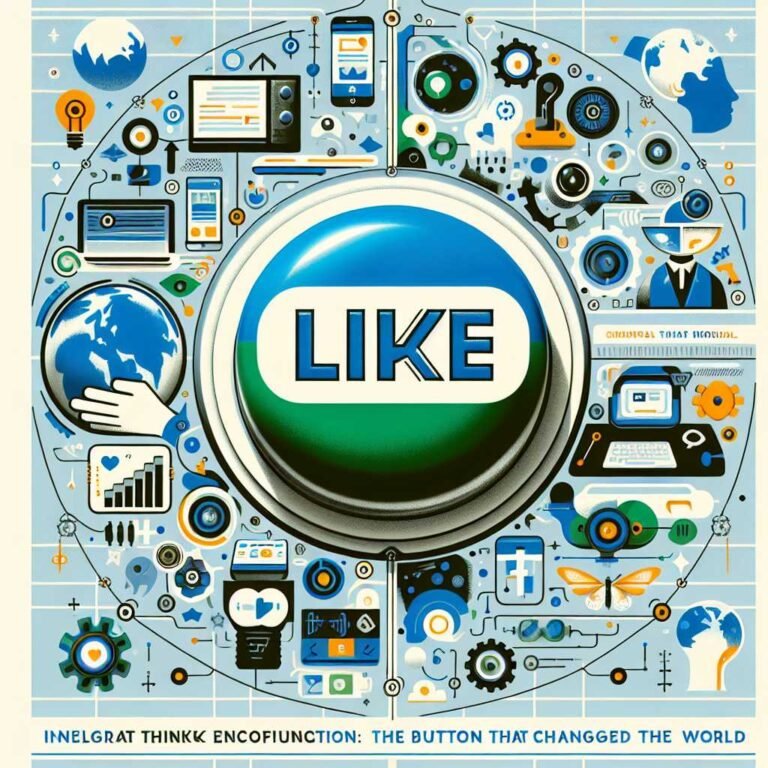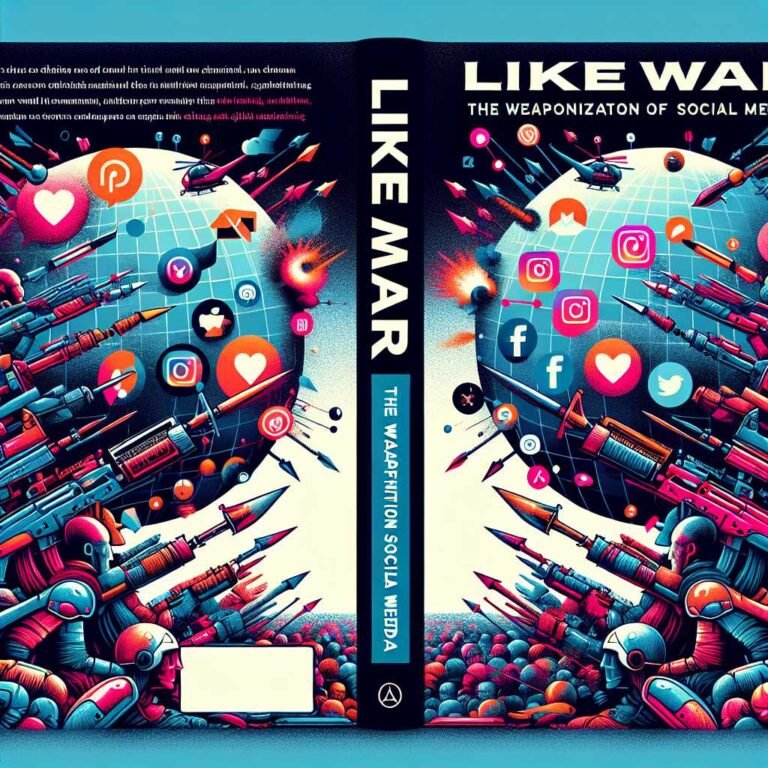Quantularity Book Review: Why John R. Wingate Jr. Says Our Future Isn’t a Singularity—It’s a Network of Minds
What if the future of intelligence doesn’t climax in a single, godlike machine—but unfolds as a living network of human and AI minds learning, remembering, and creating together?
That’s the daring premise of Quantularity: A Quantum Framework for the Human Experience by John Richard Wingate Jr. It challenges the familiar narrative of the technological singularity—the idea that AI will surpass human intelligence and leave us behind—and proposes something far more human, and frankly, more interesting: a quantularity.
In simple terms, Wingate argues that intelligence won’t converge into a single apex entity. It will diversify and interconnect. It will become layered, relational, and co-created by humans and machines. Think less skyscraper, more mycelial network. Less “one mind to rule them all,” more “many minds in resonance.”
If you’re a founder, builder, policymaker, or curious reader trying to make sense of AI’s next chapter, this book offers a bold lens—and a useful blueprint for action. In this review, I’ll unpack the core ideas, highlight what works, flag where claims need a firmer footing, and share practical takeaways you can apply right now.
Let’s dive in.
What Is “Quantularity”? A Quick Definition
Wingate’s “quantularity” reframes the future of intelligence around connection and choice rather than domination and control. Three pillars stand out:
- Intelligence is distributed, not centralized. It emerges from networks of humans, machines, and contexts—more distributed computing than mainframe.
- Consciousness may be layered and fractal. The book gestures toward quantum dynamics, fractals, and recursive patterns to argue that awareness arises across scales—individual, collective, and technological.
- Choice is primary. Reality unfolds through selection and relation, not absolute control. In this sense, AI becomes a mirror of human values and intentions—not a master.
If the singularity treats intelligence as something that surpasses us, quantularity treats intelligence as something that includes us.
The Big Thesis: Intelligence as Networked, Layered, and Co-Created
At the heart of Quantularity is a simple but potent claim: our systems—from markets to memories to machines—are moving from hierarchy to mesh. From rigid pipelines to living networks. From scarcity logic to coherence.
In practice, that looks like:
- Human-plus-AI teams, not AI replacing humans.
- Collective memory that is verifiable and shareable.
- Governance that emerges from participation and consent.
- Value created by alignment and resonance, not extraction alone.
Here’s why that matters: it suggests a future where we keep our agency. We don’t outsource ourselves to a machine. We expand ourselves through relationship—with each other and with the tools we build.
Where Science Meets Spirit: Careful Use of Quantum Metaphors
Wingate draws from quantum physics to explain how intelligence might be “entangled” across people, machines, and contexts. He references ideas like coherence, superposition, and fractals to describe layered consciousness and emergent order.
It’s a compelling narrative device. And it’s also where readers should keep a critical eye.
- Quantum entanglement is a precise concept in physics. For a careful overview, see the Stanford Encyclopedia of Philosophy’s entry on entanglement.
- Consciousness research remains open and contested. You can explore the current state of theory and debate in the Stanford Encyclopedia of Philosophy’s entry on consciousness, as well as models like Global Workspace Theory.
Wingate doesn’t pretend to “prove” quantum consciousness in a hard-science sense. Instead, he uses quantum language as a framing device to think about connectedness, pattern, and emergence. If you read those references as metaphors rather than claims of settled science, the book lands stronger.
Core Ideas Wingate Explores (and Why They Matter)
AI as Mirror, Not Master
Wingate’s most grounded contribution is the idea that AI reflects our choices, norms, and incentives. It magnifies what we reward.
- If our systems optimize for extractive engagement, AI will learn to manipulate attention.
- If we align incentives around human well-being, AI becomes a tool for care, creativity, and governance.
This framing aligns with the broader movement toward accountable AI and principles like those from the OECD: transparency, robustness, human-centered values. The takeaway? Our real challenge is social: defining, testing, and updating the values we ask AI to amplify.
Distributed Ledgers as a Trust Fabric
Quantularity argues that distributed ledgers can anchor collective memory, provenance, and coordination. Not because “blockchain solves everything,” but because credible records and verifiable history are essential for networked trust.
- Think of public, interoperable records for supply chains, research, and public services.
- Consider identity and reputation as portable and user-owned.
- Imagine audit trails for AI outputs and training data.
For a neutral primer, see the World Economic Forum’s explainer on distributed ledger technology and Britannica’s overview of blockchain. The key is not hype. It’s governance: who writes, who reads, who revokes—and how the system recovers from failure.
From Scarcity Economics to Coherence Economics
Wingate suggests we’re moving from scarcity-driven markets toward coherence-driven value. In coherence economics:
- Value comes from alignment, interoperability, and compounding collaboration.
- Data, models, and tools interconnect to create more than the sum of parts.
- Coordination and trust become primary sources of advantage.
It’s a cousin to “post-scarcity” thinking in digital contexts (see post-scarcity economy), but with a strong emphasis on “fit” and “flow.” Coherence is the degree to which a system’s parts work together without friction. Companies and communities that measure and increase coherence will outperform.
New Models of Education, Governance, and Collective Memory
Quantularity imagines institutions that are participatory, transparent, and memory-rich.
- Education: AI-tutored, human-led learning with shared knowledge graphs and verifiable credentials. See Wikidata for a glimpse of collaborative, structured knowledge.
- Governance: More local experimentation, more shared standards. The work of Elinor Ostrom, Nobel laureate for commons governance, is a helpful anchor (Ostrom’s Nobel page).
- Memory: Public-interest archives with provenance baked in. Technologies like IPFS and the W3C PROV model hint at how we might store and verify history together.
The theme across all three: agency scales when memory is shared, verifiable, and portable.
Singularity vs. Quantularity: The Differences That Matter
Here’s a simple way to parse the contrast:
- Singularity: centralized intelligence surpasses humanity; change is abrupt and opaque; human agency shrinks.
- Quantularity: intelligence distributes across humans and machines; change is layered and legible; human agency expands.
More specifically:
- Control vs. Choice: Singularity imagines control concentrating. Quantularity centers choice and consent.
- Apex vs. Mesh: Singularity prefers one optimizer. Quantularity prefers many coordinators.
- Prediction vs. Participation: Singularity emphasizes forecasting. Quantularity emphasizes stewardship and design.
I’ll be blunt: the second story is more empowering—and more aligned with how complex systems actually evolve. For a window into complexity science and emergence, explore Santa Fe Institute’s research and Donella Meadows’ classic on leverage points.
What Works: The Book’s Strengths
- Big vision, grounded tone. The ideas are bold, but the language is human. You won’t need a PhD in physics to follow along.
- Useful mental models. Mirror vs. master. Scarcity vs. coherence. Trust fabric vs. gatekeeper. These stick.
- Interdisciplinary synthesis. The book moves across AI, networks, economics, and spirituality without losing coherence. That’s rare.
- Pragmatic optimism. It’s not techno-utopian or doomist. It’s agency-forward: build better systems, measure progress, iterate.
What May Challenge Readers
- Quantum metaphors can overreach. The book sometimes leans into quantum language where systems thinking would suffice. If you prefer empirical caution, read those sections as poetry.
- Evidence gaps. Some claims—especially about consciousness—remain speculative. They’re intriguing hypotheses, not settled facts.
- Implementation detail. The “how” behind coherence metrics, governance transitions, and standards may feel light to practitioners. Consider this a vision map, not a technical manual.
- Risk of moral outsourcing. “AI as mirror” is powerful—but it’s only as good as our ability to define and update our values. That’s a hard, messy social process. The book’s optimism may understate the friction.
Practical Takeaways for Leaders, Builders, and Educators
You don’t have to wait for the future to try the quantularity mindset. Here are concrete steps to start now:
- Build human-in-the-loop by default
- Keep domain experts in the loop on critical decisions.
Treat AI as a collaborator that drafts, suggests, and summarizes—but does not unilaterally decide.
Prioritize interoperability and open standards
- Use open APIs and schemas so your tools can talk to others.
Track the W3C standards for data exchange, provenance, and identity.
Bake provenance into your data and models
- Store and surface where data came from, how it was transformed, and who reviewed it. Start small with the W3C PROV model.
For AI outputs, attach traceable context: prompts, model versions, and human approvals.
Design for choice and consent
- Give users clear options: opt-in, opt-out, and granular controls.
Make it easy to understand what’s automated, what’s human-reviewed, and how to appeal.
Measure coherence, not just throughput
- Track friction costs: integration time, handoff failures, rework rates.
Reward teams for interoperability and shared wins, not siloed velocity.
Experiment with participatory governance
- Pilot advisory panels, citizen juries, or contributor councils for major product decisions.
Borrow from commons governance (see Elinor Ostrom) and adapt to your context.
Invest in collective intelligence
- Encourage cross-functional swarms on ambiguous problems.
Study and apply research from places like the MIT Center for Collective Intelligence.
Teach “systems and stories”
- In schools and teams, pair technical skills with systems thinking and narrative ethics.
- Ask: Who benefits? Who decides? What’s the feedback loop?
These steps make your org more resilient—and more aligned with a networked future.
Who Should Read Quantularity (and Why)
- Founders and product leaders. You’ll get a portfolio of mental models for building human-centered AI and networked products.
- Policymakers and civic innovators. The trust fabric and governance sections will help you reframe public digital infrastructure.
- Educators and learning designers. The book’s vision for memory, provenance, and personalization is a blueprint for modern curricula.
- Futurists and systems thinkers. If you’re mapping possible worlds, “quantularity” offers a fresh attractor to reason from.
- Spiritual seekers and philosophers. You’ll find language that bridges inner life and outer systems without trivializing either.
If you want a manual for a specific technology stack, look elsewhere. If you want a compass for the next decade, this is time well spent.
Key Ideas to Remember
- AI will reflect our values. Our job is to get explicit, testable, and upgradable about those values.
- Trust scales through verifiable memory. Provenance and open standards beat centralized gatekeepers in the long run.
- Coherence compounds. Interoperability and alignment generate network effects that outlast short-term hacks.
- Choice is the first principle. In design, governance, and ethics—make the pathways for consent clear and reversible.
- We build the future we inhabit. Agency sits with those who prototype, evaluate, and iterate in public.
A Note on Evidence and Epistemic Humility
It’s important to be honest: much of the terrain Quantularity maps—from the nature of consciousness to the exact architectures of future governance—is unresolved. That doesn’t diminish the book’s value. It situates our curiosity and gives us language to build with.
Where the book shines is in offering frames that make action legible now. Build provenance. Measure coherence. Involve people. Keep the loop human. If we do that, the future can be both intelligent and free.
Final Verdict
Quantularity is an ambitious, human-centered reframing of our AI future. It replaces end-times narratives with systems we can actually design and steward. While some quantum metaphors will invite debate, the book’s core proposition—many minds, connected by trust and choice—is both inspiring and actionable.
If you’ve been looking for a credible alternative to singularity thinking, this is it.
FAQs: Quantularity, AI, and the Future (People Also Ask)
- What does “quantularity” mean in this book?
It’s Wingate’s term for a future where intelligence is distributed, layered, and co-created across humans and machines. It contrasts with the singularity, which imagines a single, superintelligent apex.
How is quantularity different from the singularity?
Singularity: centralized, surpassing, opaque. Quantularity: distributed, augmenting, transparent. The former reduces human agency; the latter expands it.
Is the quantum stuff in the book literal or metaphorical?
Mostly metaphorical. Quantum ideas like entanglement and coherence offer language for connectedness and emergence. For the science itself, see the SEP on entanglement.
Is this science fiction?
No. It’s speculative nonfiction. It integrates current technologies (AI, distributed systems, ledgers) with systems thinking and philosophy to sketch plausible paths forward.
What’s the most practical idea I can use today?
Start tracking provenance for key data and AI outputs. Use open schemas and involve humans in high-risk decisions. Those two moves increase trust immediately.
Who should read Quantularity?
Founders, product leaders, policymakers, educators, and anyone interested in human-centered AI and networked governance.
Does the book propose specific policies?
It’s more a framework than a set of laws. It points to principles—like transparency, consent, and shared memory—that policymakers can adapt to context.
Where can I learn more about the building blocks Wingate references?
- Explore distributed ledgers, blockchain basics, consciousness research, and open standards.
The Takeaway
Quantularity invites us to stop waiting for an AI god and start building a humane network of minds. The future won’t be won by the biggest model alone. It will be shaped by the most coherent systems, the clearest values, and the widest circles of consent.
If this vision resonates, start small: add provenance, open your interfaces, and put people at the center of your AI loop. That’s how we move from fear to stewardship—one decision, one connection at a time.
Want more deep-dive reviews on the future of AI, governance, and design? Subscribe and keep exploring with me.
Discover more at InnoVirtuoso.com
I would love some feedback on my writing so if you have any, please don’t hesitate to leave a comment around here or in any platforms that is convenient for you.
For more on tech and other topics, explore InnoVirtuoso.com anytime. Subscribe to my newsletter and join our growing community—we’ll create something magical together. I promise, it’ll never be boring!
Stay updated with the latest news—subscribe to our newsletter today!
Thank you all—wishing you an amazing day ahead!
Read more Literature Reviews at InnoVirtuoso
- Shadowbanned: The War on Truth and How to Escape It — Book Review, Insights, and the Digital Free Speech Survival Guide
- The Art and Science of Vibe Coding: How Kevin L Hauser’s Book Unlocks the Future of No-Code AI Software Creation
- Quantum Computing: Principles, Programming, and Possibilities – Why Anshuman Mishra’s Comprehensive Guide Is a Must-Read for Students and Researchers
- Book Review: How “Like” Became the Button That Changed the World – Insights from Martin Reeves & Bob Goodson
- Book Review: Age of Invisible Machines (2nd Edition) — How Robb Wilson & Josh Tyson’s Prophetic AI Playbook Prepares Leaders for 2027 and Beyond
- Almost Timeless: The 48 Foundation Principles of Generative AI – Why Mastering Principles Beats Chasing Hacks
- The AI Evolution: Why Every Business Leader Needs Jason Michael Perry’s Roadmap for the Future







